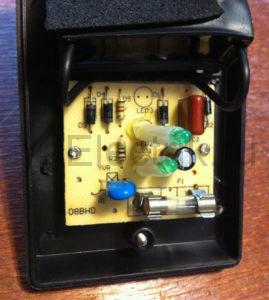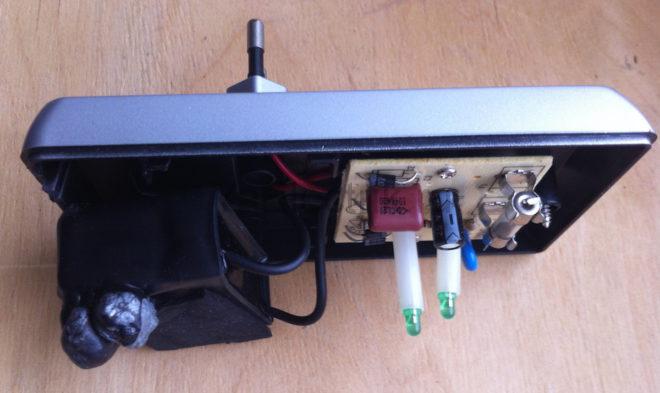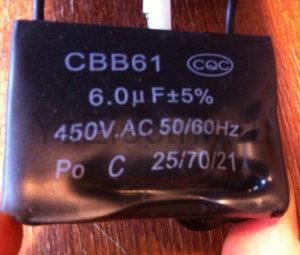Energy-saving device - myth or reality?
Paying bills, especially after the next increase in tariffs, many people think about the need to save electricity. The most meticulous of us go to the Internet and type in the search for "how to save electricity" and then one after another we come across online stores offering a device for saving electricity. The temptation to buy a miracle device once, in order to pay half as much for electricity all your life, is undoubtedly great, but doubt immediately creeps in - is this not a divorce? Does the energy-saving appliance actually work? Let's take a closer look.
Content
What do manufacturers tell us?

The market and online stores now present such a number of such devices that their eyes run wide, you don't know which one to choose. As soon as manufacturers do not name their devices - economizers, energy savers, economists.
To make the right choice, many people start reading reviews. Honestly, it's better to never do this, there are a lot of false reviews, so do not believe it, but figure it out thoroughly yourself.
Let's consider how the "saving" of electricity occurs using the example of the energy-saving device "ELECTRICITY SAVING BOX". Going to the site where they offer to buy such a device (and even with a 50% discount), we learn from the first page that it turns out that every second European family has already purchased such a savings device for their home, and is saving energy and money at full speed. No shop, office, auto repair shop, beauty salon, restaurant or residential building is complete without it.
Additional benefits
The manufacturer points out that the device not only saves energy, but also has a number of advantages:
- There is no deception of the meter, just by connecting the device, energy is used more efficiently and an economic result is achieved.
- The service life of electrical household appliances is extended.
- Electromagnetic radiation harmful to humans, which emanate from electrical devices and wiring, is minimized.
- The effectiveness of such a device is not unfounded, it is confirmed by numerous studies and has a scientific explanation.
And to use the device is easy and simple. It is enough to plug it in, and in 1-2 months it will fully recoup the money spent, reducing the monthly electricity bill by 30-50%.
Principle of operation and diagram of the device
How does the instruction for its use explain the action of such a wonderful device?
Electricity consists of two components - active and reactive. Active energy is useful, it is it that household appliances use for their work. Reactive energy is invisible, it creates an additional load on the network. As a result, the current consumption increases. Plus, reactive energy induces harmful electromagnetic fields. According to the manufacturer's instructions, the energy-saving device removes the reactive component from the network. Due to this, the current consumed by household appliances from the network is reduced. Accordingly, the consumption of electricity and the cost of paying for it becomes less.
Now let's see what the device circuit consists of, so that in reality it can provide such an economic effect. Outwardly, it looks pretty nice - a plastic silver case, and on a black insert a shiny logo with the name of the company. Electrical contacts in the form of a plug are built into the housing.There are also one or two LEDs that indicate the on position of the device.
Having unscrewed one screw that holds the two case halves together, you can see a small electronic board with a minimum of components and a film capacitor (its capacity is small, about 6 microfarads). If you carefully study the circuit assembled on the board, it will become clear that it simply provides LED indication.
Testing the device
Theoretically, we studied the entire device, it remains to test it in practice.
You should immediately pay attention to the meter readings, and even better, make control measurements. It is necessary to write down the numbers on the counter, for example, at 9.00 today, then at the same time the next day and calculate what the expense was during the day. It used to be more convenient to keep track of the counters when their action was based on a rotating disc. The speed of rotation immediately became clear - the disc moves slower, which means less consumption, and, accordingly, vice versa. But now it is unlikely that somewhere there is a house or apartment with a disk counter, everywhere they have been replaced by electronic ones a long time ago. So you have to write down the readings and then make simple calculations.
After that, you need to plug in the device to save. Instrument manufacturers recommend choosing the nearest outlet from the meter, but you can turn it on in the most loaded one. The LEDs, as they should be, lit up. Now you need to calculate the flow for the next day with the device turned on (again you need to take a day for the reporting period from 9.00 today to 9.00 tomorrow). It is very important that the load connected to the network does not change. That is, let the same number of household appliances in your apartment (refrigerator, computer, TV, water heater, electric heating) remain connected to the network for this reporting period, so that you can evaluate the device in terms of efficiency to save energy.
Unfortunately, it turns out that the meter clocked the same kilowatt-hours as without the included saving device.
But many people, thinking that they are buying an electricity economizer, come home, take out a bargain purchase from the package, plug it in and calmly begin to wait for the economic effect, and do not even look at the meter readings. After a month, when the time comes to pay for the consumed electricity, they are surprised to find that the consumption has remained the same. Why did it happen? What's the catch with this device? Is this just another myth and a way to make money on gullible people?
To answer these questions, you first need to have a good understanding of the components of electricity. As mentioned above, it is of two types.
Energy: active and reactive
Active is the component of electricity that is spent on creating visible work. For example, a fan began to rotate, a pump began to pump water, an electric fireplace heated the air, a music center made music, electric lighting lamps lit up. That is, active electricity has done useful work and has been transformed into light, sound or thermal energy. The active component is always measured in watts (W). Many electrical appliances in their work are based only on this component - electric stoves and ovens, irons and heaters, incandescent lamps. If the passport says that the active power of the device is 1 kW, then such a technique will take from the network and the full power of 1 kVA.
Reactive energy is called so because it is invisible. Many household appliances will not work without it, since the main unit in their work is the engine. It, in turn, is set in motion by creating an electromagnetic field around it.And this is the main function of reactive electricity. These household devices include a refrigerator and a washing machine in each apartment, all types of power tools (grinders, electric drills, screwdrivers, wall chasers). This value is measured in vars (var).
To reduce the consumption of electrical energy, it is necessary to reduce its active and reactive components.
In the case of an active one, it is enough to turn off unnecessary consumers, that is, to reduce the number of lighting lamps and electrical household appliances powered from the network.
Reactive energy is reduced by the inclusion of rather powerful capacitors in the network, which compensate for it and reduce consumption. To choose the right capacitors, you need to know the total power of all electrical devices connected to the network. Those 6 microfarads, which are available on the film capacitor included in the device's circuit to save energy, will only be enough to compensate for the reactive power of a small fluorescent lamp (40 W).
But the funny thing is that the value of this compensated reactive power has absolutely no effect on anything. In our houses and apartments, active electricity meters are installed and they absolutely do not care how much reactive energy passes through them. The household home meter does not count it.
Don't be fooled
The device, which we considered above, the Chinese manufacturer bothered to equip with at least a small capacitor. The circuitry for cheaper devices generally consists of LEDs and resistors. When plugged into an outlet, two small indicators start to glow, something like garlands for a Christmas tree turns out. But garlands at least perform the function of decorating the New Year's holiday, and a device with two luminous dots does not carry any functional significance at all.
Therefore, as much as we would not want to disappoint those who have already bought such energy-saving devices, but we have to admit that this is a solid scam. While people throw away money to buy devices to save electricity (and they cost from 300 to 1,500 rubles), those who invented them rub their hands together. A very profitable business is to buy a batch of such boxes in China, increase the price 10 times and sell to gullible citizens.
Here is a detailed video report of ordering two different economists directly from China:
We hope this is enough to refuse to buy the device. And even more so do not try to come up with something on your own. Again, the Internet is full of articles, diagrams and videos on how to make a device to save electricity yourself. They even come up with such sassy names as "free electricity". In no case do not fall for these tricks, a self-made "economizer", in the worst case, can damage the electronic board of the meter, and in the best case, it is simply time and money wasted.
How to save energy without a miracle device?
To add a little optimism, we want to give you real advice on how you can reduce energy consumption in a residential building:
- Incandescent lamps can be replaced with fluorescent, energy-saving, LED. It's that simple, and the annual energy savings when replacing only 10 bulbs will be about 800 kWh.
- Use natural light more during the day. To do this, do not clutter the windowsills with huge flower pots, do not hang dark curtains.
- Install a multi-tariff electricity meter. The night tariff is cheaper, so use the delayed start function in your home appliances. Run your dishwashers, washing machines, bread makers and multicooker to work at night.
- When installing lighting in an apartment, you should definitely find a place for hanging wall lamps and sconces, small portable lamps. If you feel like reading or knitting, turn them on, not the overhead lighting of the entire room.
- During the day, when you leave home, and at night, when you sleep, turn off TVs, computers, stereos, microwave ovens from the network. All these electrical appliances also consume electricity in standby mode.
- Change home appliances to new ones whenever possible. The older it is, the higher its energy consumption. When buying, give preference to models with class A.
- Before using the air conditioner, close all windows and doors, do not cool the outside.
- If you have electric heating, you should think about additional insulation of your apartment or house outside.
- And, of course, when leaving, turn off the light.
We hope that in this article we have explained in an accessible way that by buying and installing such devices to save energy, you can only slightly unload a small section of the wiring from a tiny fraction of the reactive component. But the counter will not appreciate your efforts or the money thrown into the wind. Do not mess with home-made devices, but rather use the tips and learn to save honestly.







